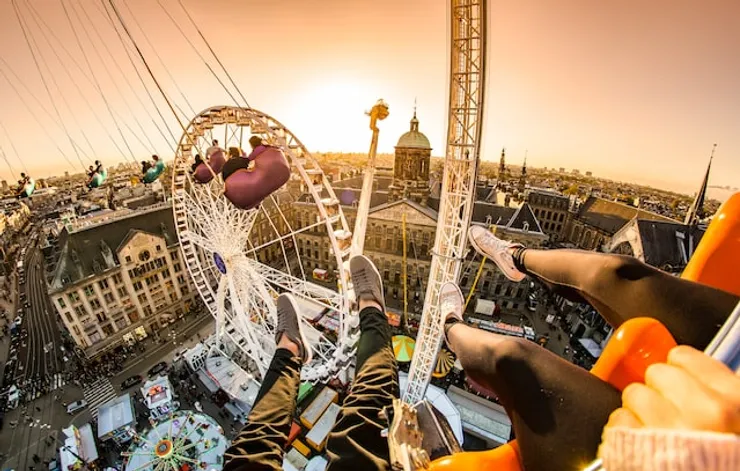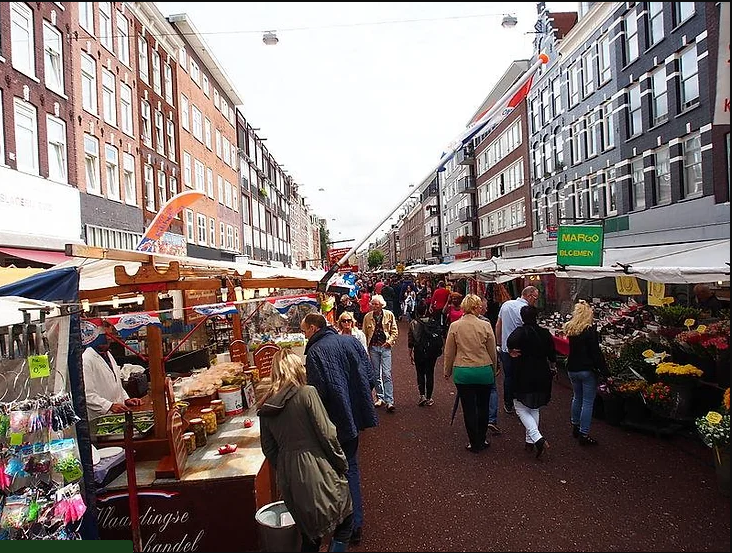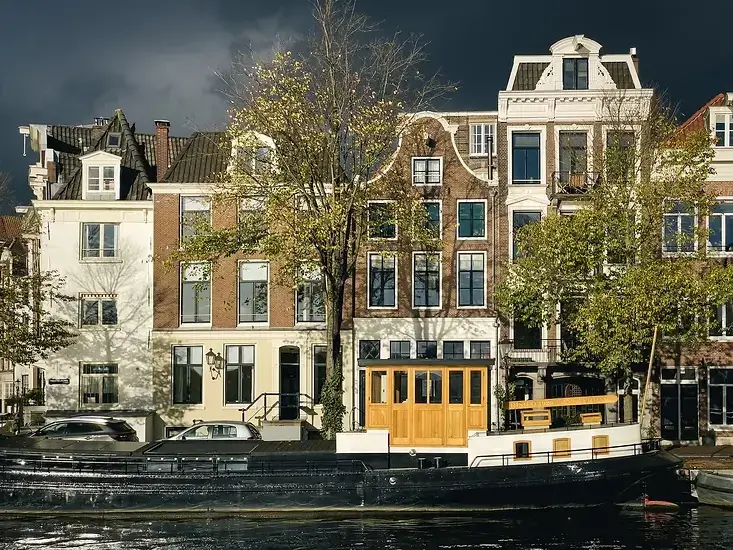
Amsterdam is known for its diverse attractions, including the Red Light District, coffee shops, and museums. However, among its iconic features are the canals, which have held a place on the UNESCO World Heritage List since August 1, 2010. The canals serve as a symbolic representation of the city and are often captured in photographs by numerous tourists. Boats filled with visitors frequently navigate these waterways, contributing to the canals’ rich history and enigmatic charm.
As Amsterdam’s canals boast a lengthy history, so inquiries about them are quite common. That’s why, in this article, we’re going to share 12 interesting facts about the Amsterdam Canals.

1. Why Are There So Many Canals in Amsterdam?
The abundance of canals in Amsterdam is rooted in the historical and geographical context of the city. The Dutch Golden Age (17th century) marked a period of economic prosperity for the Netherlands, and Amsterdam, as its main city, experienced rapid urban expansion. Extensive planning and engineering efforts were made to efficiently manage trade and transportation within the growing city.
2. How Were Amsterdam Canals Built?
To construct the canals, workers used hand tools. The soil was dug out manually or with the help of animals, and the excess material was often used to build embankments along the sides of the canal and to elevate the city streets. Timber piles were driven into the marshy ground to form a stable foundation for the canal walls. These piles, often made of tree trunks, were driven deep into the soft soil until they reached firm ground. The space between the piles was then filled with a mixture of clay and mud, which formed a solid foundation for the canal walls.
The construction process also included building locks and sluices to regulate water levels and allow for wartime flood control. As the canals took shape, a complex system of bridges was built to connect different parts of the city. The overall effort required skilled engineering and a significant workforce, contributing to the city’s reputation for innovation and urban planning.
3. What Are Amsterdam Canals Used For?
These canals were initially built to facilitate trade and transportation during the Dutch Golden Age. Today, their functions have evolved to encompass a range of uses. One primary role is that of transportation. The canals continue to be navigable waterways, utilized by boats and barges for transporting goods and people within the city. This not only contributes to an efficient transport network but also offers a scenic and distinctive mode of travel for both locals and tourists.
Beyond their transportation function, Amsterdam’s canals play an important role in regulating water levels and preventing flooding in the low-lying city. The complex canal system helps control water flow and drainage, serving as an advanced water management system. Additionally, the canals have become popular recreational spots, hosting a variety of water-related activities such as boating, kayaking, and leisurely strolls along the canal’s banks. Overall, Amsterdam’s canals integrate historical significance, and aesthetic value into the fabric of the city.

4. How Many Canals Are There in Amsterdam?
Amsterdam boasts an extensive network of canals, with a total of about 165 canals that are over 100 kilometers (about 60 miles) long. Canals are distributed throughout the city, creating a distinctive rainbow pattern. The four main canals in the city center, known as the Grachtengordel, are particularly noted for their historical and architectural significance.
5. Are Amsterdam Canals Man-Made?
One common question about Amsterdam’s canals is whether they are man-made or natural waterways. The answer is that the canals in Amsterdam are entirely man-made. The construction of the canals began in the early 17th century during the city’s “Golden Age.” The purpose behind their creation was twofold: to facilitate trade and transportation and to reclaim land from the water. The ambitious canal project involved extensive digging and engineering, transforming the landscape of Amsterdam into the interconnected waterways we see today.
6. What is Amsterdam’s Best Canal Cruise?
Amsterdam offers a wide range of canal cruises, each providing a unique experience. The “best” cruise largely depends on personal preferences. Options include historic tours, dinner cruises, and open-air boat rides. Popular choices include our are: the Canal Ring Cruise, which explores the UNESCO-listed canals, and the Evening Cruise, perfect for a romantic experience.
7. Are Amsterdam Canals Saltwater or Freshwater?
Amsterdam’s canals are freshwater, not saltwater. The water is mainly a combination of local surface water, rainfall and groundwater. The city’s canals are not connected to the sea, and as a result, they do not have a direct inflow of salt water. The fresh water nature of the canals is important for various purposes. While the city is known for its proximity to the North Sea, the canals themselves remain distinctly freshwater environments.
8. How Deep Are the Amsterdam Canals?
The average depth of the Amsterdam canals is 2.6 meters, with the lowest point reaching 4.5 meters below sea level. The depth of the canals are carefully maintained to ensure proper water circulation and prevent flooding. Interestingly, the city relies on approximately 11 million poles driven into the ground to support the canals and prevent them from collapsing. You can read more about Amsterdam canals history here!
9. Do Amsterdam Canals Freeze Over?
While Amsterdam’s canals have been known to freeze over in the past, it has become increasingly rare in recent years. To freeze over, temperatures must remain consistently below zero degrees for an extended period, and the ice needs to reach a thickness of at least 7cm. The last instances of frozen canals occurred in 2012 and 2018, bringing joy to locals who eagerly dusted off their ice skates to skate along the frozen waterways.
10. Can You Swim in the Amsterdam Canals?
Although the idea of swimming in Amsterdam’s canals might be tempting, it is generally not recommended. The water in the canals is not considered the cleanest, particularly in heavily trafficked areas. While you may occasionally see people taking a dip, especially during a popular annual swimming event called the Amsterdam City Swim, it’s essential to exercise with caution and be aware of the potential health risks associated with swimming in urban canals. Wearing proper swim gear is very important. A well-fitted swimsuit, swimming cap, and goggles can enhance both comfort and visibility. If you’re swimming in unfamiliar or public pools, consider using earplugs to reduce the risk of ear infections.

11. What Fish Can Be Found in Amsterdam Canals?
The canals of Amsterdam are home to a variety of fish species, contributing to the diverse ecosystem of the waterways. Common fish species that can be found in the canals include pike, perch, bream, roach, and carp. These fish play an important role in maintaining the ecological balance of the canals and are a testament to the resilience of nature within an urban environment. Know more about Amsterdam Canals Fishing Here!
12. How Clean Are Amsterdam Canals?
Amsterdam’s canals vary in cleanliness, and it depends on several factors. In general, the water quality in the core areas of the canals is good, meeting the standards required for recreational use. The city has taken measures to maintain cleanliness, such as periodic cleaning and monitoring. However, due to urbanization and boat traffic, some areas may present challenges, and there may occasionally be litter or pollution. Efforts are made to address these issues, but the impact of human activities on canals must be kept in mind. However, efforts are being made to raise awareness and implement measures to protect and preserve the canals’ ecological integrity.
Conclusions
Amsterdam’s canals are more than just waterways; they are a testament to the city’s rich history, engineering prowess, and commitment to maintaining a thriving urban ecosystem. Whether you’re interested in their origins, recreational opportunities, or ecological significance, Amsterdam’s canals offer a fascinating journey through the heart of the city.














Leave a Reply